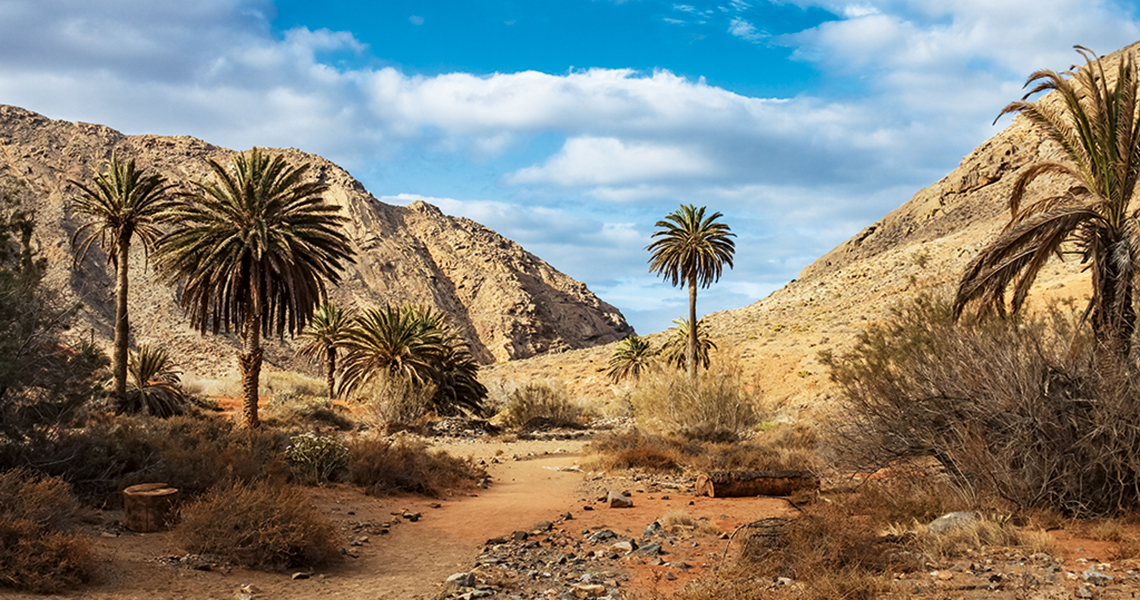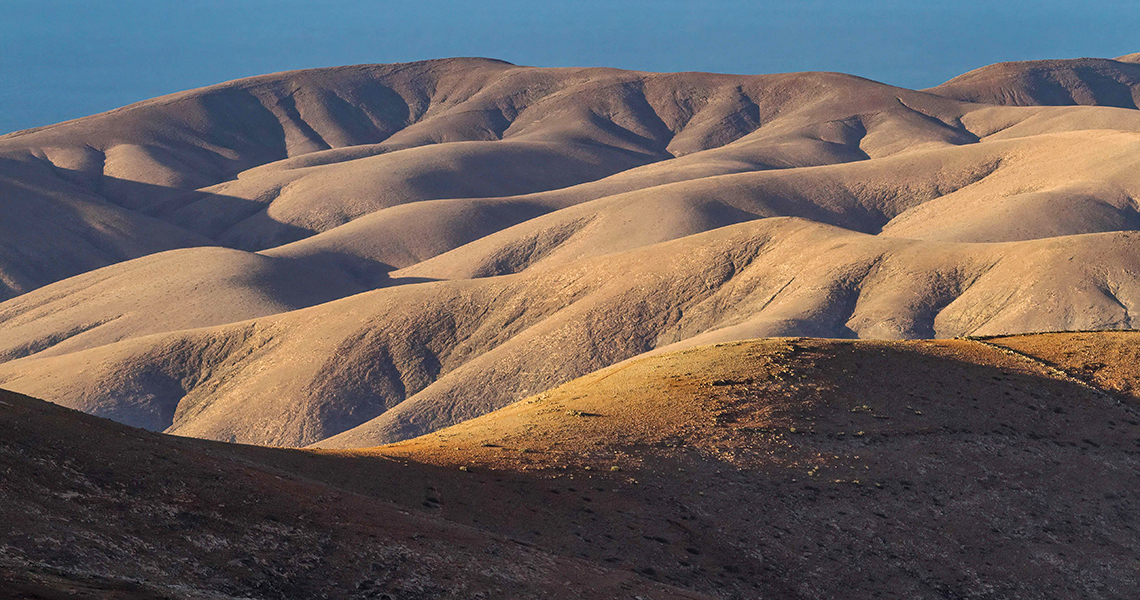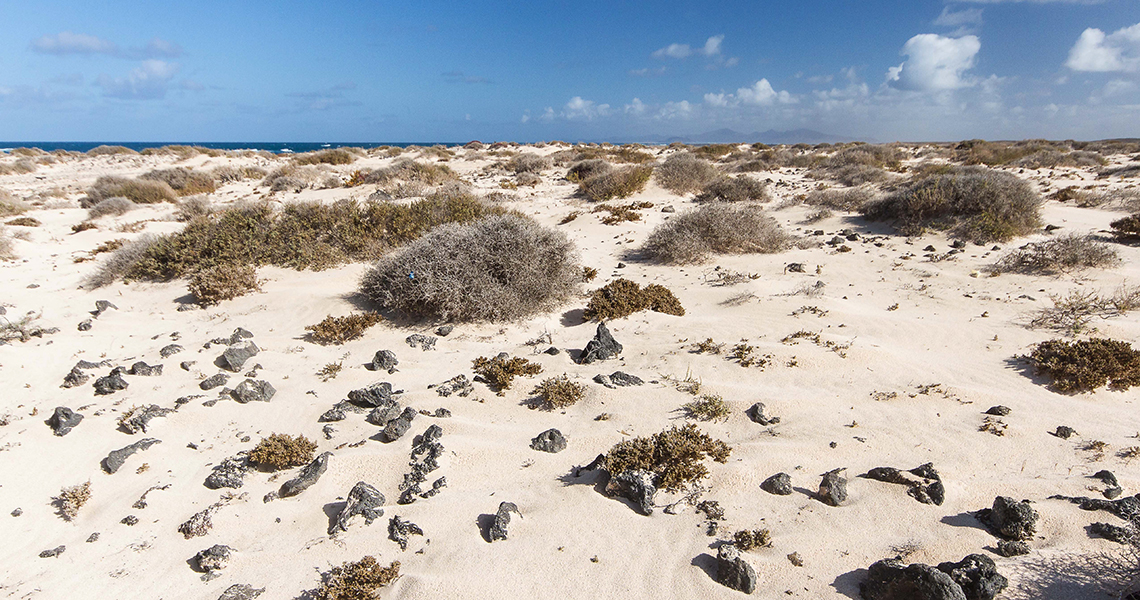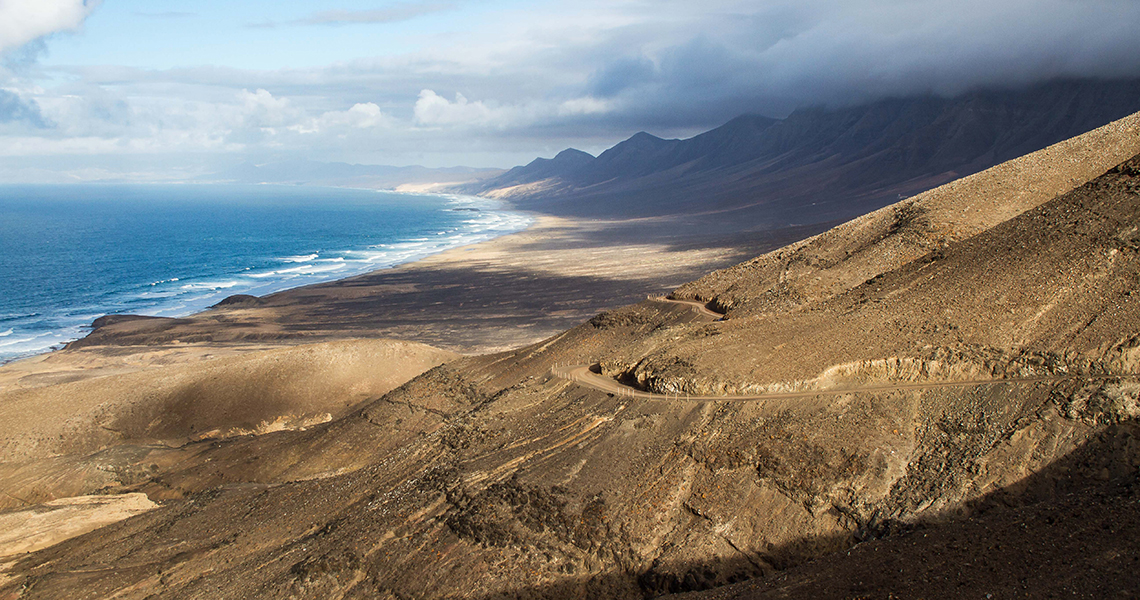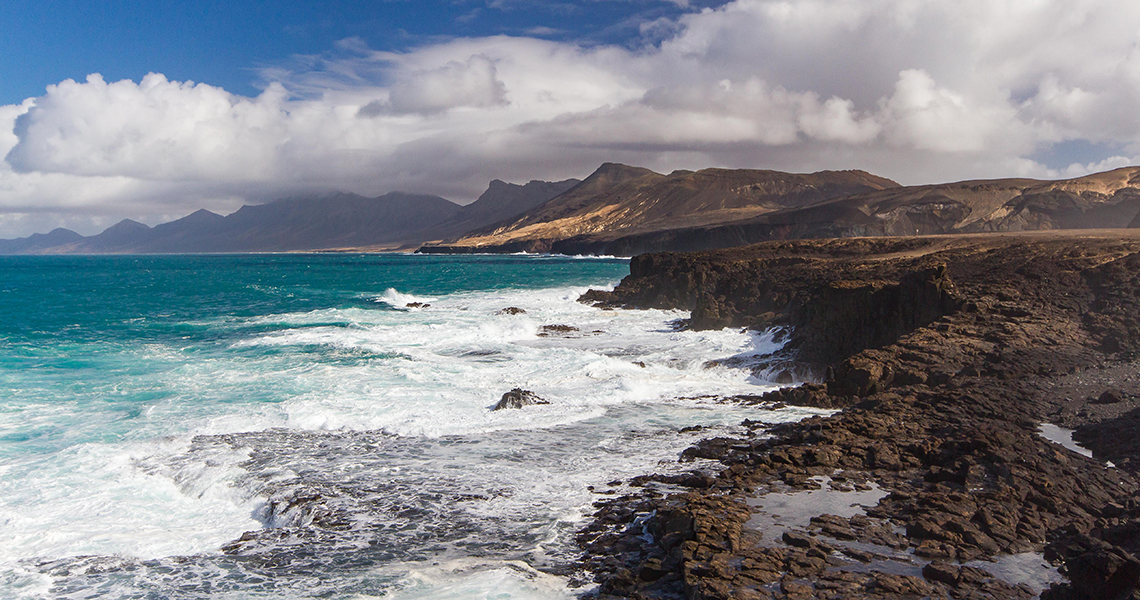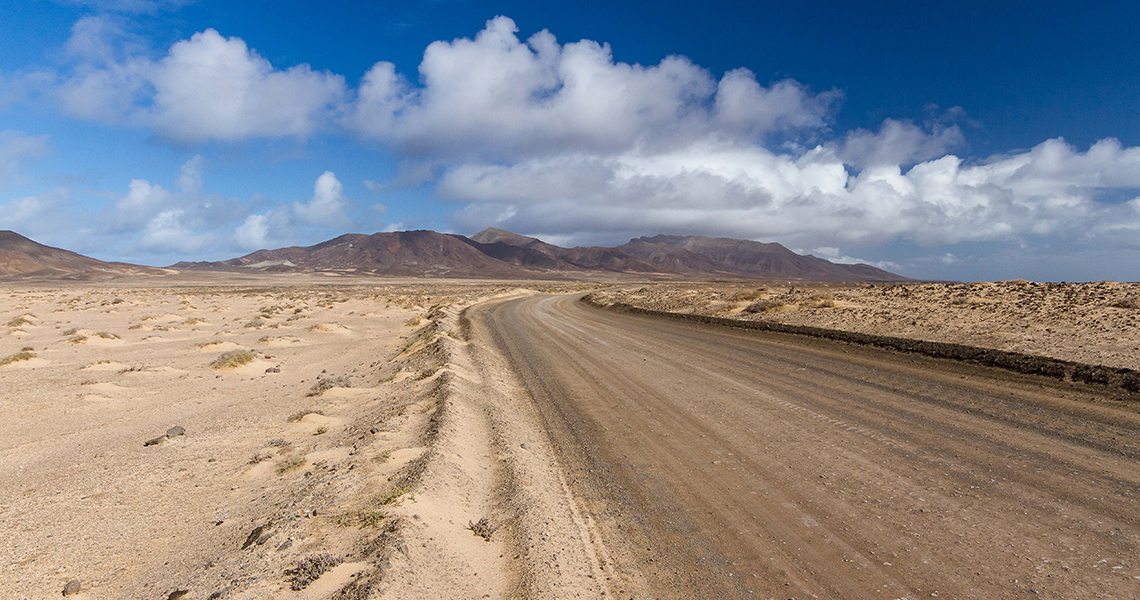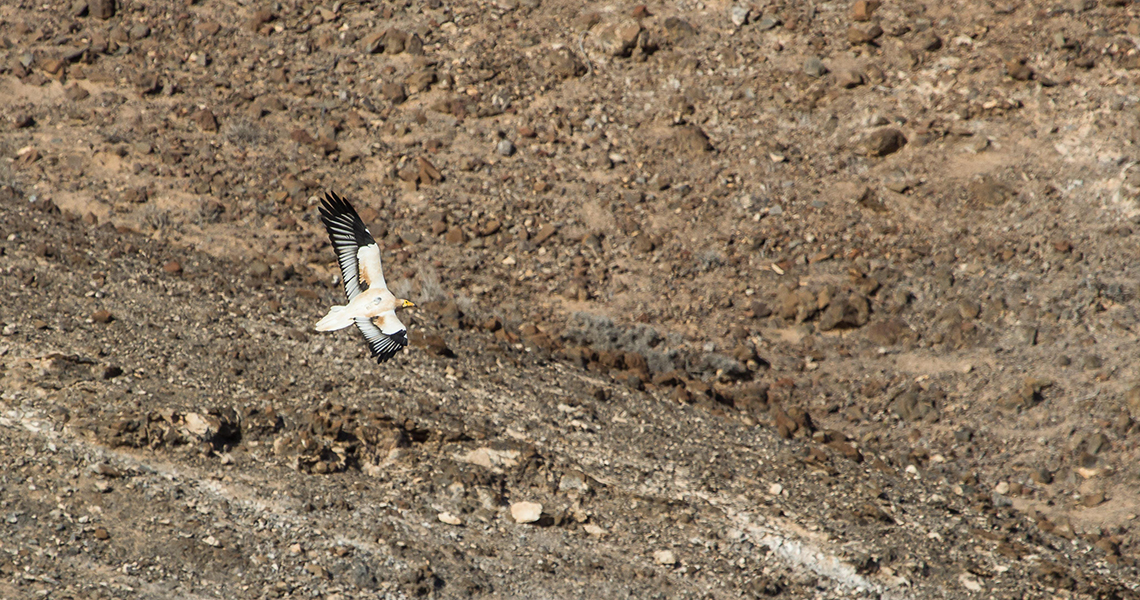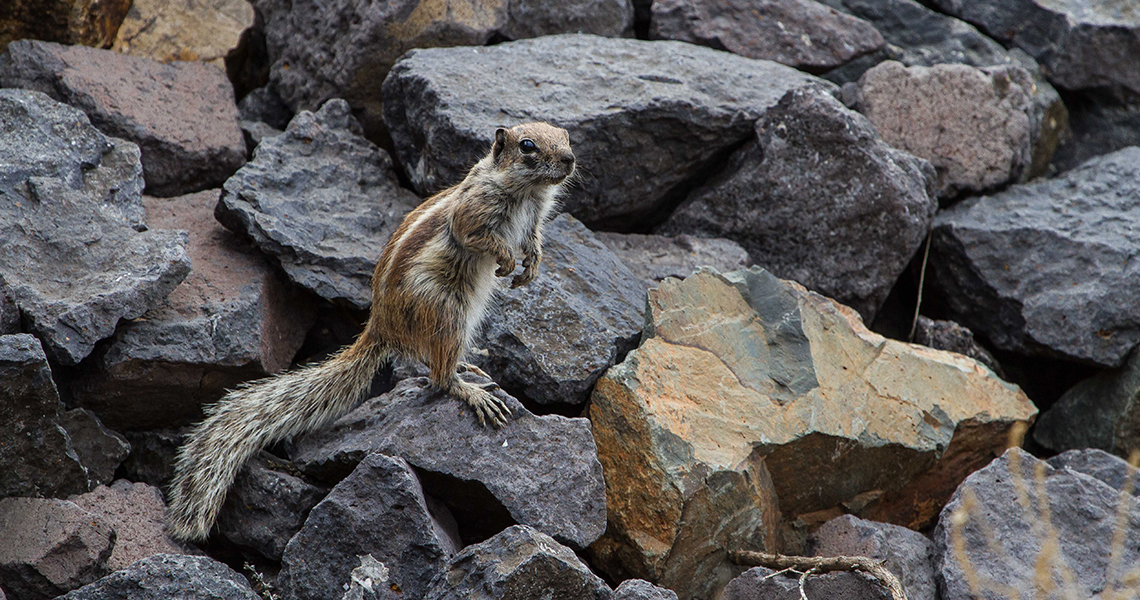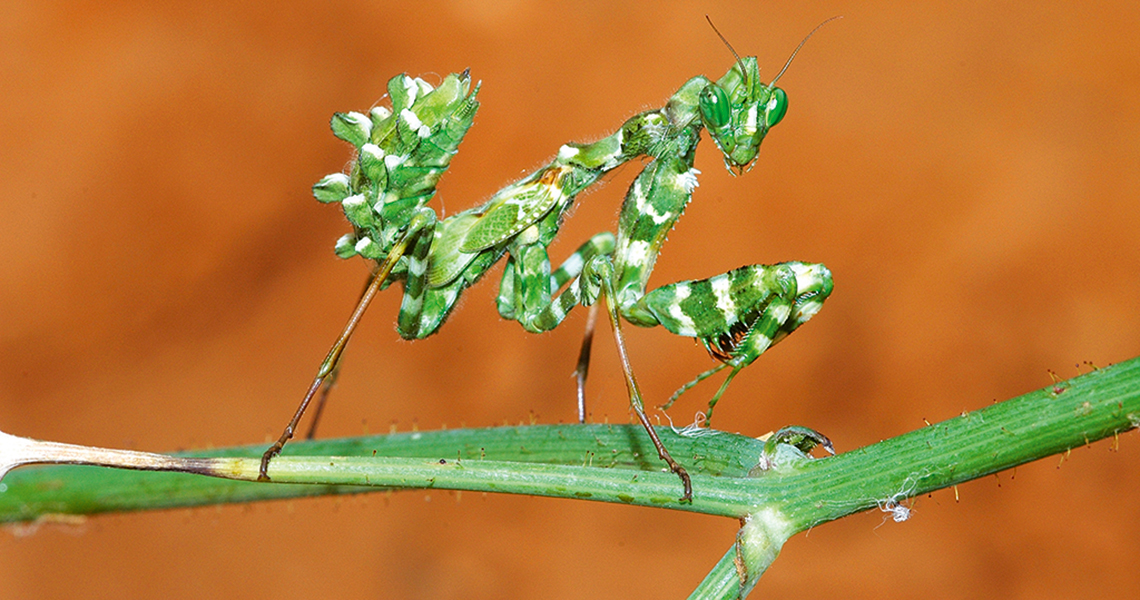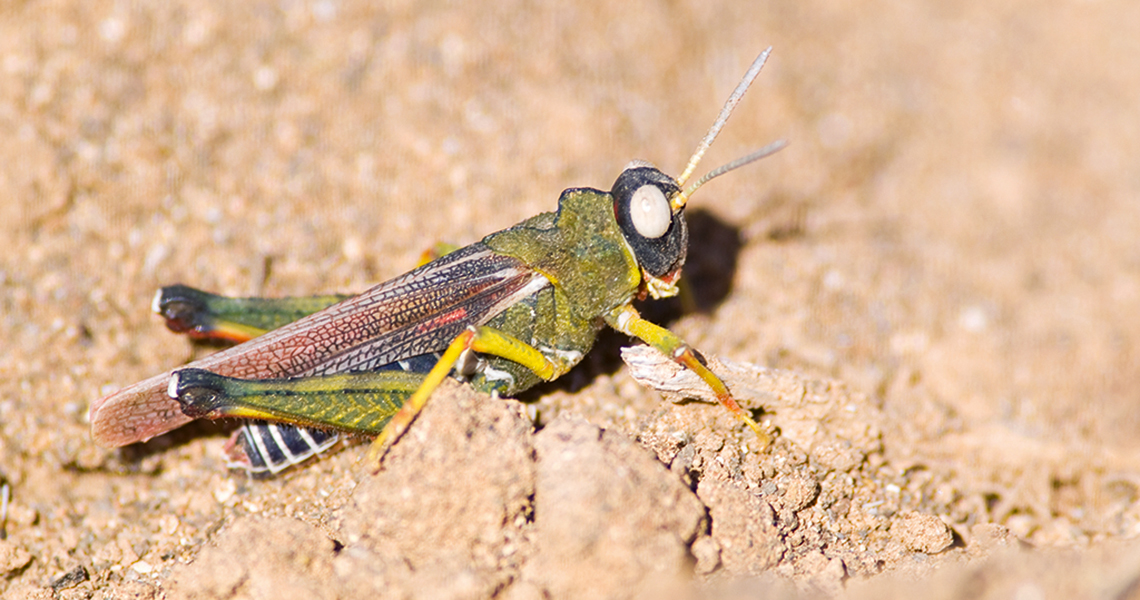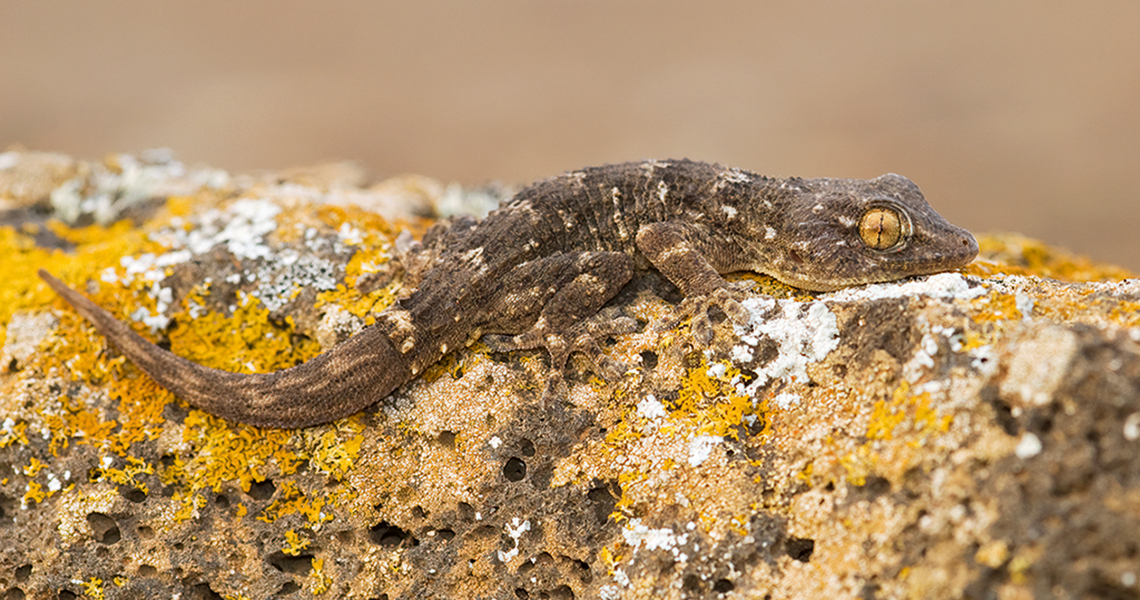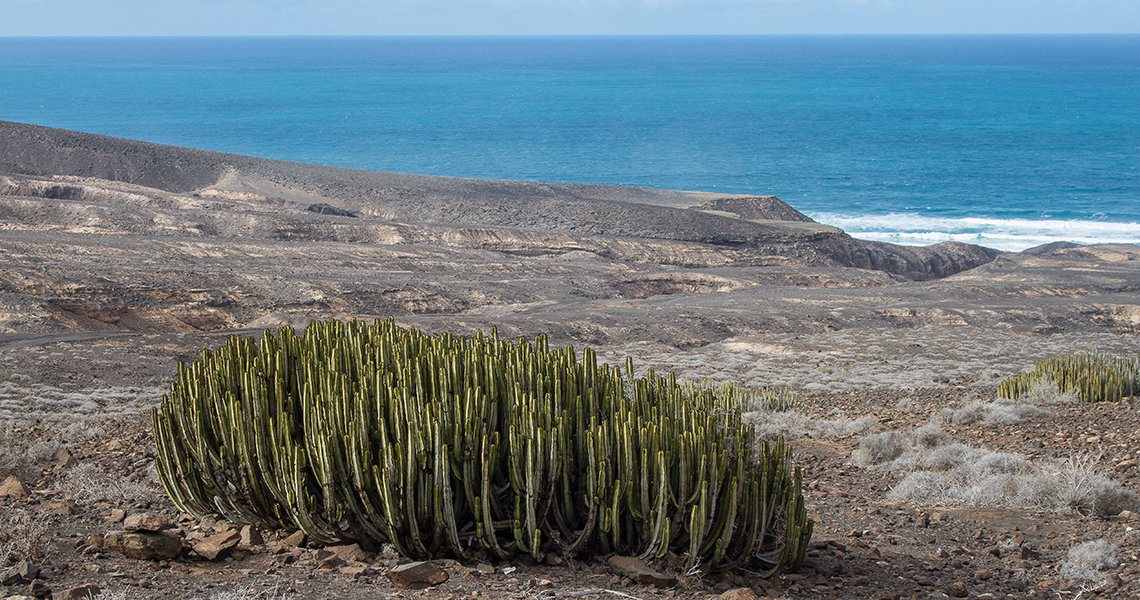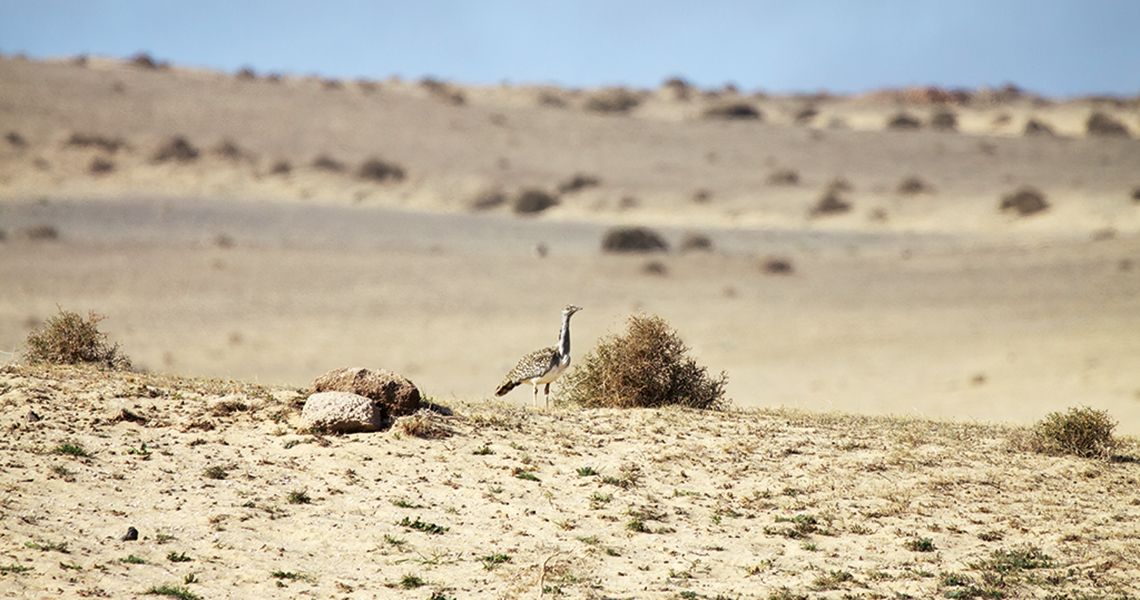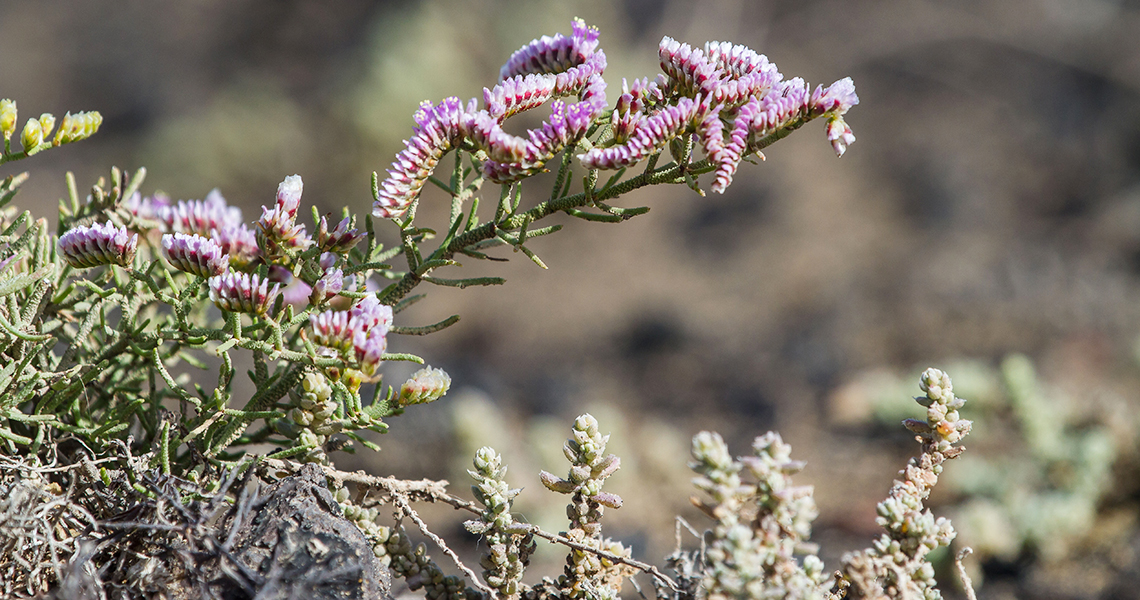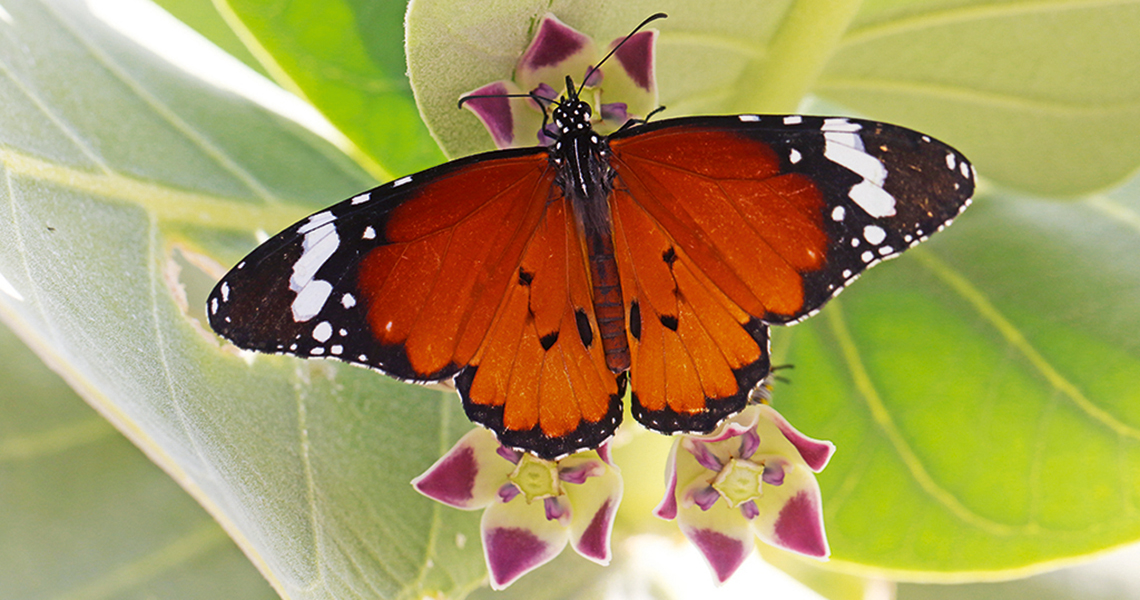Nature and Wildlife of Fuerteventura – by Crossbill Guides
To all naturalists, birdwatchers, ramblers, photographers and all other nature lovers, a warm welcome to this page about the nature and wildlife of Andalucia, Spain. This website accompanies two Crossbill nature travel guidebooks – Western Andalucia and Eastern Andalucia. This is an online Crossbill Guide ‘light’ for the armchair traveller. It offers some general insights and images to entice you to visit, plus some practical information, sites and a free route from the Crossbill Guide. Enjoy!
Fuerteventura is the southernmost of the two eastern islands of the Canary Island archipelago. It lies only 100 kilometres off the south Moroccan Coast. Together with Lanzarote (which is a 20 minute ferry trip further north) Fuerteventura is the only part of Europe that is classified as a desert. Whereas Lanzarote is the ‘black island’, due to its young lava, Fuerteventura could be called the ‘red island’. The volcanic soil here is, with few small exceptions, much older and is terracotta in colour.
Fuerteventura is much flatter and lower than the other Canary Islands, and has large plains, separated by rounded, stony sierras. This combination is ideal for many desert birds. Fuerteventura is the only island in the archipelago (and one of the few in the European-North-African region), that is home to a bird that occurs nowhere else in the world – the Fuerteventura Stonechat.
Landscape of Fuerteventura
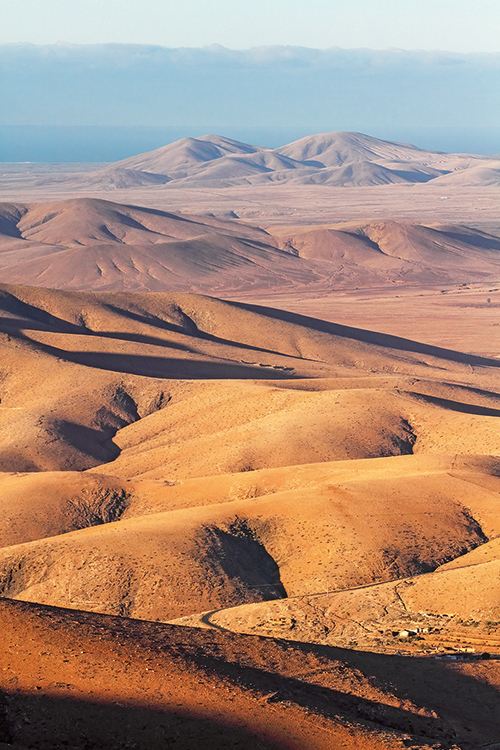
The Coast
Fuerteventura’s coast is its touristic selling point. This is the only one of the Canary Islands that has large stretches of inviting beaches. Even though these are popular among tourists, quiet parts still remain. Locally there are bays, lagoons and saline vegetation where waders and other migrating birds are common. Since Fuerteventura is so close to the Moroccan coast (that is right in the middle of a major bird migration route), large numbers of birds regularly visit Fuerteventura’s shores.

Desert plains and barrancos
For visiting naturalists, birdwatchers in particular, Fuerteventura’s desert plains are the main focal point. This is where rare birds like Houbara Bustard can be found (see below). The plains are mostly stony, with a scant growth of dwarf shrubs. The poor vegetation is in part due to the many goats that roam Fuerteventura, which are considered a hallmark of this island. Particularly at the beginning and towards the end of the day, the low sun makes the reddish plains glow – a beautiful sight.
All over Fuerteventura, the plains are riddled with rocky riverbeds, barrancos, which are dry for most of the year, only carrying water after one of the rare rain showers. These barrancos are superb for wildlife – raptors breed on the deserted cliffs, endemic plants root in the fissures, and geckos and lizards are common. This is also the favoured habitat of the endemic Fuerteventura Stonechat.
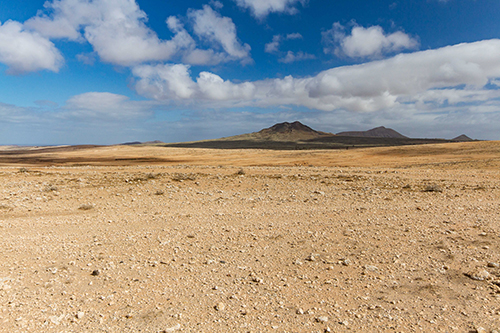
Sand desert
In the north and in the south, there are two large areas of sand desert. The southern one, which forms the isthmus between the main part of the island and the mountain peninsula of La Jandía, is the most attractive. The southern side of this area of sand dunes is quite developed, with several tourist resorts, but the north shore is still spectacular and wild. This is where many of Fuerteventura’s rare plants are found.
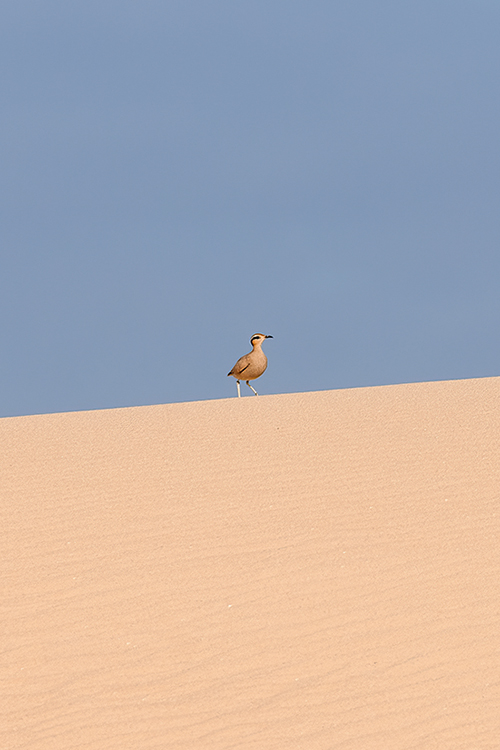
Malpaís
The word Malpaís literally translates ‘bad land’ and refers to the stony fields of block lava. Like all of the Canaries, Fuerteventura is a volcanic island, but most of it is so old that, unlike Lanzarote, the volcanic origin is not clearly visible in the landscape… except in the Malpaís. There are large areas of Malpaís in the north of Fuerteventura and they form a strange, sculptural landscape of solidified rock. Reptiles do very well in this landscape, as do wildflowers. After all, these chaotic rock gardens are difficult to access for goats and therefore form a natural refuge for plants. As a result, butterflies do well in these areas too.
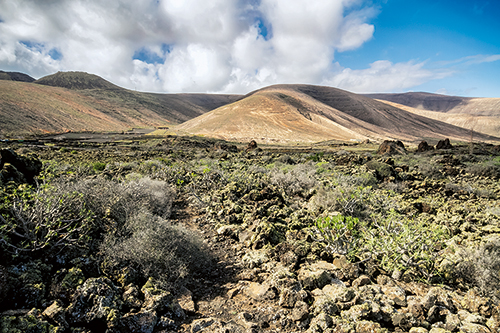
The high cliffs of La Jandía
Fuerteventura is, together with Lanzarote, different from the other Canary Islands in that they lack high mountains. On Fuerteventura, the peninsula of La Jandía is at 807 metres (Pico de la Zarza) the highest. On the western islands, this would be the lowest part of the mountain slope where fog is frequent. The crest of La Jandía too has a somewhat more luxuriant vegetation as a result of the fog that rises here in winter. Several plant species occur therefore only on the ridge and upper north slope of La Jandía. Interestingly, the lower south slope is the hottest and driest part of the island and therefore also a unique microclimate. In the hottest valleys here (and nowhere else in the world) grows the Jandia Spurge, an odd, spiny, cactus-like plant.

Resorts
Tourist resorts are both a scourge and a blessing to the wildlife of the island. Apart from all the negative impact associated with mass tourism (disturbance, excessive water use, pollution), the vegetation planted in these resorts is verdant and oasis-like to many species. Although the trees and shrubs are all planted, the birds and butterflies associated with them are not. Quite a few of them are not native. They were either (accidentally) introduced or colonised this new habitat by themselves (see entry on birds below). The permanent presence of flowers attracts butterflies and other insects, often of different species than in the interior of the island.

The naturalist top 10
Ten highlights of your visit to Fuerteventura
La Jandía has the most impressive landscape in the whole of Fuerteventura. Driving the dirt tracks around the central mountain chain and to the empty deserts at the western end, is an unforgettable experience.
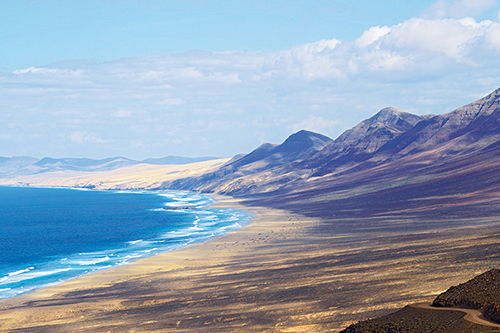
Get up early and walk up to the Pico de la Zarza, the island’s highest peak. The views from here across the island are superb and so is the flora. This is the only part of Fuerteventura with remnants of the flora of laurel forests.
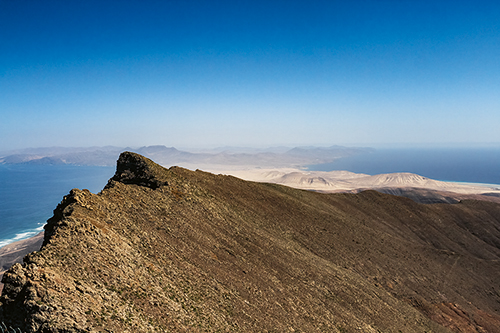
Fuerteventura’s desert plains and barrancos are the prime location for birdwatching. Houbara, Fuerteventura Stonechat, Black-bellied Sandgrouse, Cream-colored Courser and many others can be found here.

Take a boat trip out to the island of Lobos, and enjoy a splendid walk, birds, wildflowers and top it off in one of the finest snorkelling sites of Fuerteventura.
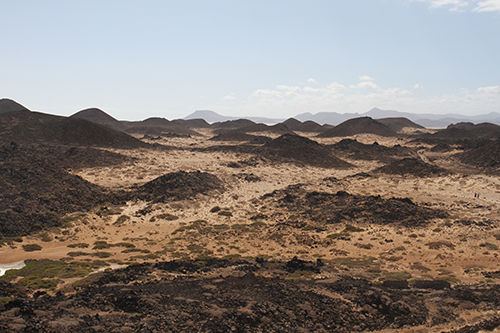
Go snorkelling, either on Los Lobos or elsewhere on the island.

Take a boat trip out to the island of Lobos, and enjoy a splendid walk, birds, wildflowers and top it off in one of the finest snorkelling sites of Fuerteventura.
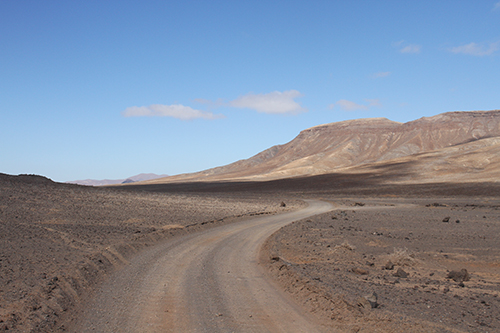
Head for the sand dunes at Istmo de La Pared. This area resembles, more than any other part of the Canaries, the Sahara Desert and is rich in wildflowers (mostly flowering in late winter and spring).
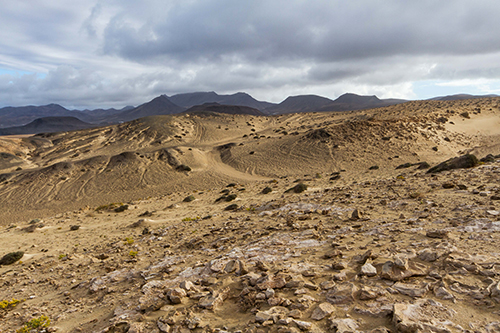
Sit yourself down on one of the capes and spend the morning watching seabirds.
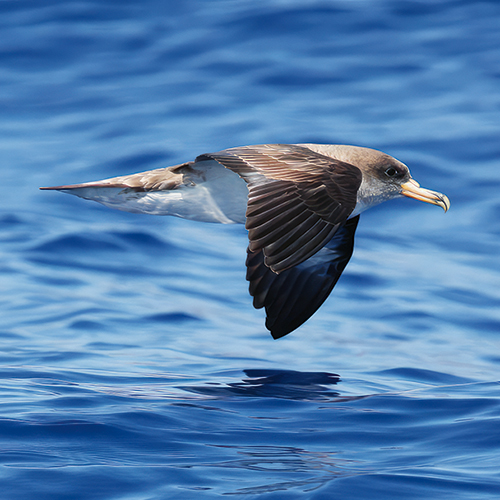
Visit historical Betancuria and stroll down one of the valleys in the surrounding hills, where butterflies, birds and the adorable Barbary Ground Squirrels can be seen.
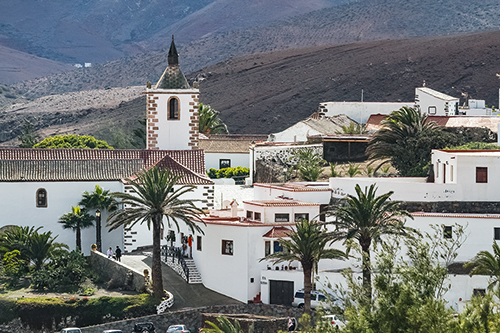
Both historic and attractive, the small town of La Oliva has lava fields on its edge which are home to rare wildflowers, particularly the odd-looking Caralluma.
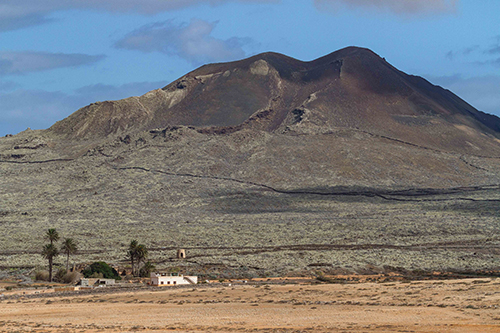
Birds, butterflies and wildflowers – The flora and fauna of Fuerteventura
The Canry Archipelago is a botanical treasure trove, with hundreds of species that occur nowhere else in the world but here. Logically, the desert island of Fuerteventura is not nearly as rich as that of the western islands. Nevertheless, many of the plant groups for which the Canaries are famous (like viper’s-bugloss (Echium), houseleeks (Aeonium), marguerites (Argyranthemum) and spurges (Euphorbia)) have at least one species in Fuerteventura. And that one is then found nowhere else in the world but on this island, or is only shared with that other desert island, Lanzarote.
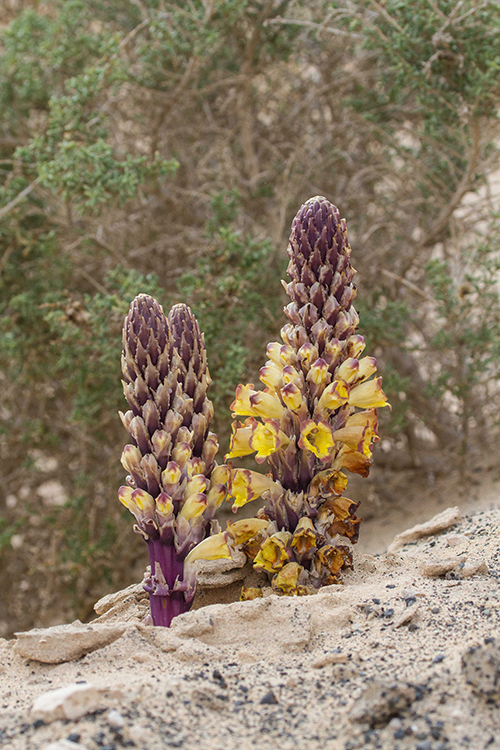
Good examples are King’s Juba’s Spurge (Eupohria regis-jubae), which is together with Balsam Sprurge (E. balsamifera) the common bush on the island. The cactid Jandia Spurge (Euphorbia handiense) is even restricted to a few valleys in La Jandia peninsula. Other special plant species are the cactus-like Caralluma burchardii and the beautiful, parasitic Cistanche pelyphaea, which also occurs in southern Spain and Portugal.
Mammals
There are few land mammals on Fuerteventura and most of them are very hard to see. The great exception is the Barbary Ground Squirrel, introduced from Morocco and living in the barrancos and mountain slopes. These adorable animals are quite tame around Betancuria.

Birds
Fuerteventura is a top destination for birdwatchers. The main attractions are the desert and dryland birds, but the bird list is augmented by a large number of passage migrants, some sea birds and a set of introduced species.
The desert plains are home to Houbara, Black-bellied Sandgrouse, Cream-colored Courser and the local subspecies of Stone Curlew, alongside more widespread birds like Lesser Short-toed (or mediterranean) Lark, Berthelots Pipit, Hoopoe and Great Grey Shrike (also a local subspecies). The barrancos are home to Barbary Partridge, Plain Swift, Trumpeter Finch and an endemic subspecies of Egyptian Vulture. The top bird of the barrancos however is the Fuerteventura Stonechat, a bird that lives exclusively on this island, where it is quite common.
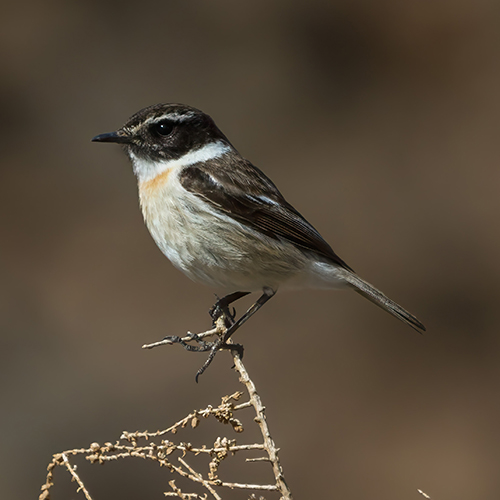
On the coast there is a large and ever-changing variety of waders, which migrate along the nearby Morroccan shore. Real seabirds (pelagic birds) are rather uncommon, except for Cory’s Shearwater. However, Barolo’s Shearwater and, since very recently, Red-billed Tropicbird also occur. In the resorts, there are birds like Laughing Dove, Collared Dove and introducedspecies like Monk Parakeet, Red-vented Bulbul, Sacred Ibis and Hadada Ibis.

Reptiles
Geckos, skinks and a specific kind of lizards, belonging to the genus Galiota (‘giant lizards’) are native to the Canary Islands. Most Canary Islands have their own endemic species in each of these groups. Fuerteventura too has a gecko (the East Canary Gecko), skink (East Canary Skink) and lizard (the Atlantic Lizard). All of these occur on Fuerteventura and Lanzarote and their satellite islands only. Of these, the easiest to see is the lizard. Unlike the lizards on the other islands, which can grow up to massive animals, the Lanzarote ‘Giant’ Lizard remains rather small, roughly the size of a Sand Lizard.
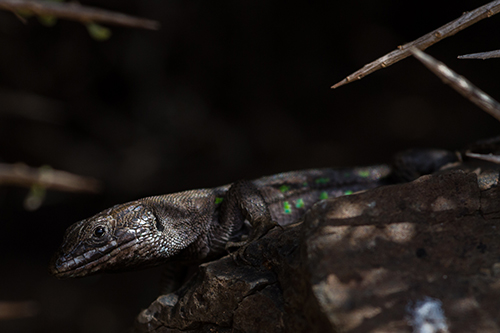
Insects
As a desert island, Fuerteventura has a limited number of insect species, but quite a lot of them are endemic. Among the butterflies, the Fuerteventura Green-striped White (Euchloe belemia) is endemic to the island. Rather common are some widespread European species, that mix with a number of African ones. Common Blue, Small Copper and Bath White occur for example, next to African Grass Blue, Greenish Blacktip and (in some years) abundant Plain Tigers and Monarchs.
The few water bodies host dragonflies like Sahara Bluetail, Broad Scarlet and Red-veined Darter.

Top 10 species
Ten superb plant and animal species of Fuerteventura
Fuerteventura is the only place in the world where this handsome bird occurs. It is widespread over the island, but prefers barrancos, gullies and stony slopes.
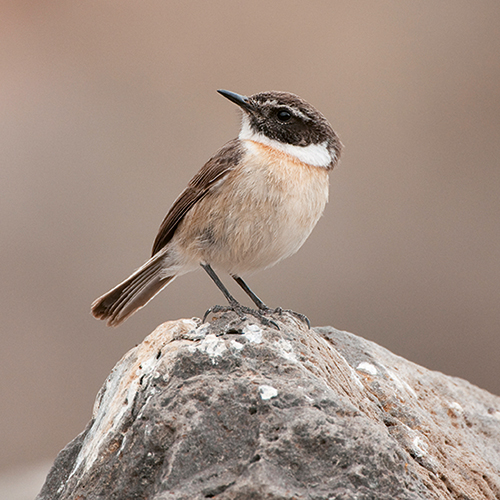
This endangered desert bird occurs in the plains of Fuerteventura. It ranges widely in the Sahara but is very scarce and hard to spot there; on Fuerteventura and Lanzarote you stand a much better chance of seeing one.
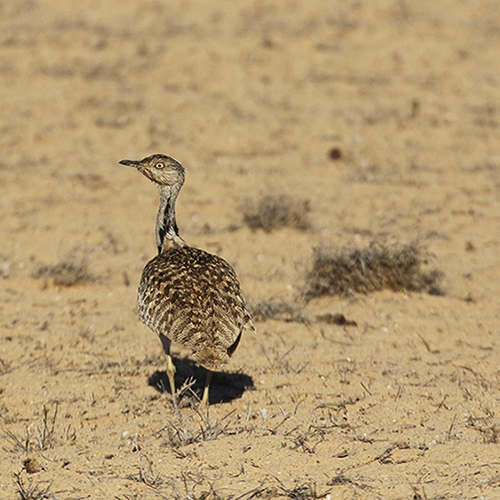
This weird-looking plant is one of the few cactus-like plants in a European country. It flowers in winter.
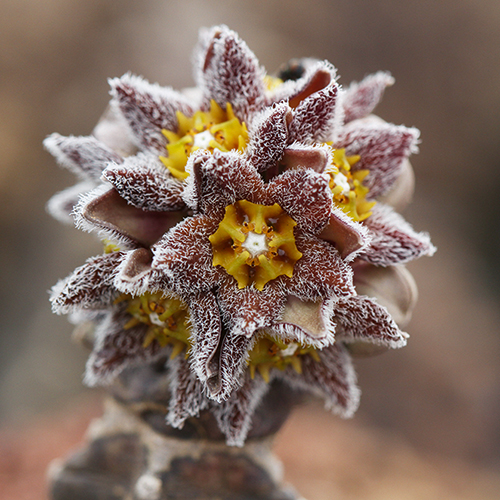
This cactus-like spurge is numerous in only four south-facing, hot valleys on the Jandía peninsula. These are the only places in the world where this fascinating species grows.

In some years, particularly in the summer and autumn, the magnificent Plain Tiger is numerous.
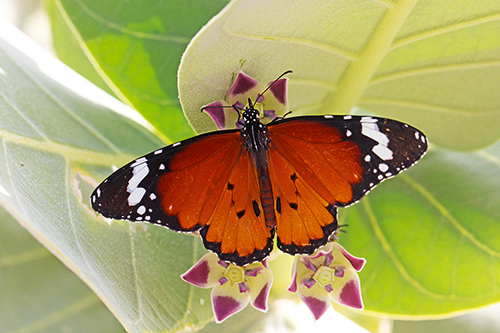
This beautiful desert bird is widespread but hard to spot in the plains of Fuerteventura. Like the Houbara, this is a desert bird, not present in Europe (although they occasionally breed in Andalucia).

This is the gecko that is widespread on Fuerteventura. It enters houses in the evening, but is most common in cracks and under stones in the Malpaís.

An introduced species from Morocco, the Barbary Ground Squirrel lives on rocky slopes with some vegetation.

The Ruddy Shelduck is the only widespread species of waterfowl on the island. It profits from the increase in golf courses (which are otherwise a threat to the Fuerteventuran environment).
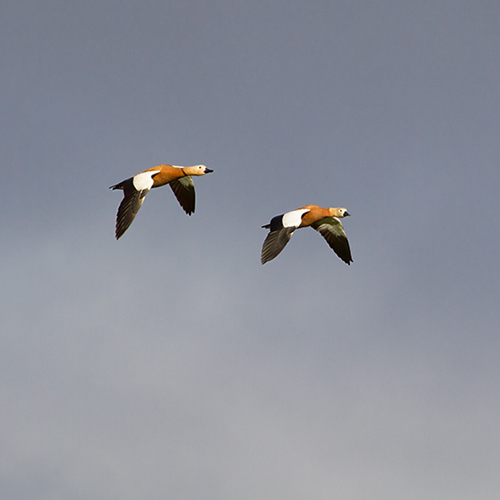
This beautiful member of the lily family grows in sandy parts of barrancos and flowers in winter. Like so many other plants, it is endemic to Lanzarote and Fuerteventura.
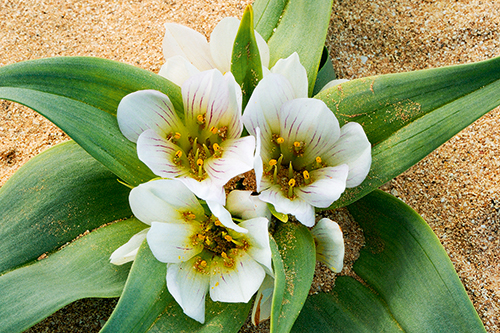
Routes and practicalities
Exploring Fuerteventura is very easy. The roads are good and most areas very accesible. Some of the remoter areas can only be reached on dirt roads, which are generally driveable too, but hire car insurance does not always cover damages sustained off-tarmac.
In places, Fuerteventura is scarred by mass tourism, but less so than Lanzarote and some of the other Canary Islands. Being a desert island, Fuerteventura is not ideal for hiking, although short walks can easily be done, especially in the cooler months. Generally speaking, Fuerteventura is not as hot and dry as Morocco at the same latitude.
The best routes, both car routes and walking routes, are described in our Crossbill guidebook on Lanzarote and Fuerteventura.
Sustainable tourism
There is no such thing as a totally environmentally friendly trip to the Canary Islands, but there are ways to minimise your impact on the environment.
- A lot of food is imported from the mainland – either by boat or, if it is fresh, by plane. As far as possible choose foods produced on the islands, in particular the fresh goods like vegetables, fish and meat.
- Tap water is safe all over the island. Use it instead of bottled water to minimise waste.
- Coastal lagoons and freshwater ponds are crucial resting spots for migrant birds. On Fuerteventura, these places are often disturbed by beach tourism and kite surfers. When you go out birding, be sure not to add to this disturbance.
Interesting links about wildlife on Fuerteventura
Wildflowers of the Canary Islands(in Spanish)
The book
The Crossbill Guides are the most comprehensible nature travel guides available. Each Crossbill Guide covers in depth descriptions on landscape, habitats, geology and all the species groups, and links these to routes where this can be seen.
These routes are typically a mixture of walking routes and car routes with stops and short walks. Combined, these routes cover all the sites for seeing birds, butterflies, dragonflies, plants, mammals and reptiles. They are also set out to show you the finest examples of the ecosystems and geological features. In short, everything for nature lovers.
Fuerteventura is covered in the Crossbill Guide to Lanzarote and Fuerteventura (2023). It contains:
- 176 pages
- 13 detailed routes
- 22 site descriptions
The authors
Dirk Hilbers (NL, 1976), set up the Crossbill Guides Foundation and travels Europe to research the guidebooks. This is the 17th guide he worked on. As a biologist, when not in the field, Dirk Hilbers is a free-lance writer and lecturer in the field of nature education and environmental ethics.

Kees Woutersen (NL, 1956) has lived in Huesca for 20 years, working as a nature and bird guide throughout Spain. He runs his own travel company, Aragon Natuurreizen. Kees Woutersen is author of various books on the birds and natural history of the Pyrenees and Aragon, e.g. the Atlases of the Birds of Huesca and Ordesa.

Constant Swinkels (NL, 1995), has been a naturalist from the moment he was able to hold a pair of binocu- lars. His interests are broad – from birds to wildflowers and butterflies to reptiles. Constant specialises in insect – vegetation interactions.


